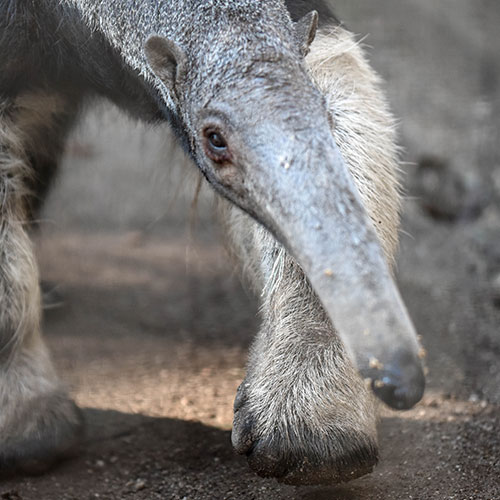
Today's Hours
10AM - 5PM
10AM - 5PM

This unique animal is the largest of the three anteater species (the other two are the tamandua or lesser anteater and the silky anteater).
Giant anteaters walk with a slow shuffle on all four legs with their nose pointed to the ground. They don’t walk on their feet; instead, with the claws curled up into the feet, anteaters walk on their "fists." This helps to keep the claws sharp so anteaters can dig into ant mounds or defend themselves from predators. Anteaters are also good swimmers, using the freestyle stroke and with their long snout as a snorkel.
| Extinct | Threatened | Least Concern |
||||||
|---|---|---|---|---|---|---|---|---|
EX |
EW |
CR |
EN |
VU |
NT |
LC |
||
